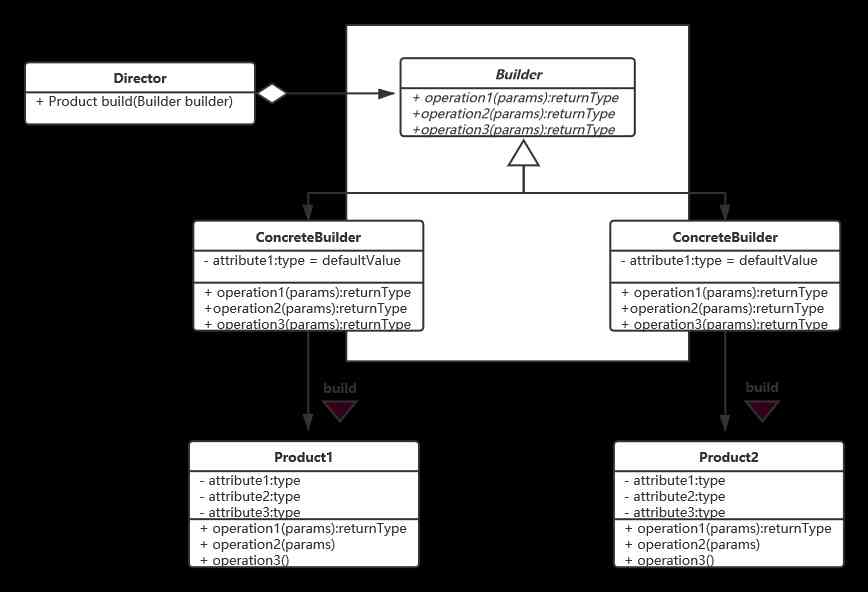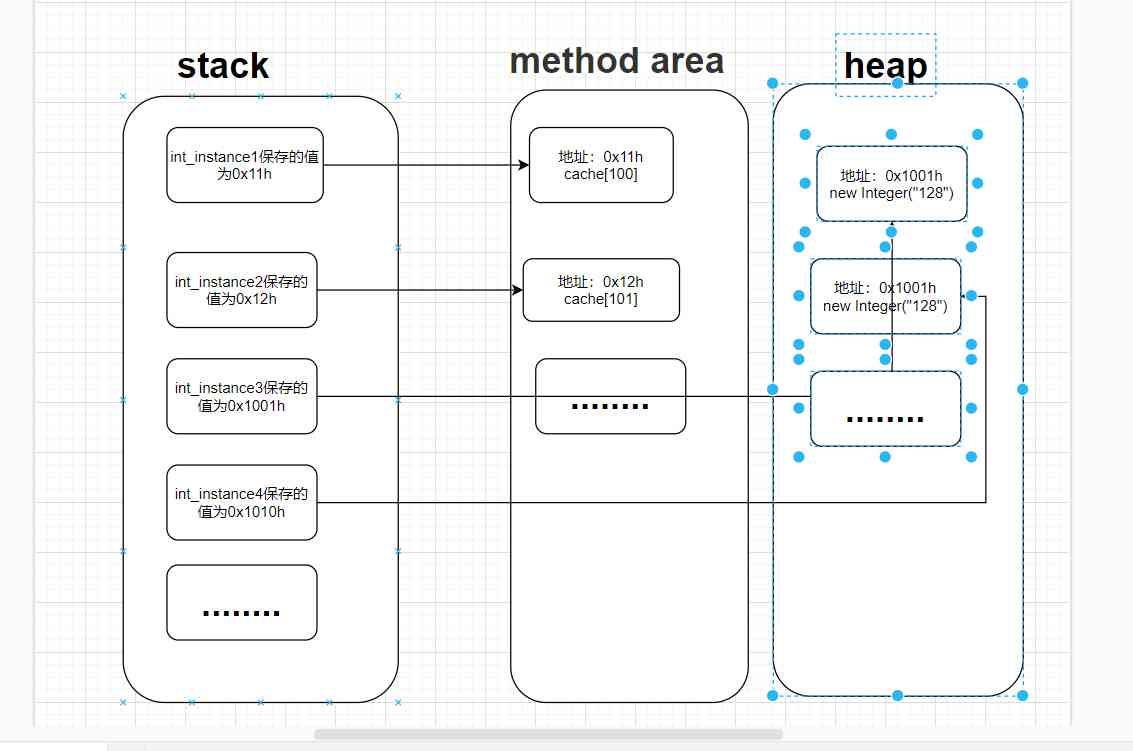Builder pattern application scenarios :
It is mainly used to build some complex objects , Here's a complex object like : When building buildings , We need to lay the foundation first , Building framework , And then cover it from bottom to top . Usually , In the construction of such complex structures , It's hard to do it all at once . We need to build parts of this object first , And then put them together in stages . So now there's the builder pattern : The builder pattern is made up of Builder( builder ) and Director( commander ) form . Please see the following UML chart :

|
Director class
package com.yuan.builder.demo1;
// command : The core , Responsible for directing the construction of a project , How the project builds , It's up to it
public class Director {
// Instruct the workers to give the order of execution
public Product build(Builder builder) {
builder.buildA();
builder.buildC();
builder.buildD();
builder.buildB();
return builder.getProduct();
}
}
Builder class
package com.yuan.builder.demo1;
// The abstract builder
public abstract class Builder {
abstract void buildA();// The foundation
abstract void buildB();// Steel Engineering
abstract void buildC();// Laying wires
abstract void buildD();// Paint
// to be finished : Got a specific product
abstract Product getProduct();
}
Worker class
package com.yuan.builder.demo1;
/**
* The concrete builder : Worker
*/
public class Worker extends Builder {
private Product product;
public Worker() {
this.product = new Product();
}
@Override
void buildA() {
product.setBuildA(" The foundation ");
System.out.println(" The foundation ");
}
@Override
void buildB() {
product.setBuildB(" Steel Engineering ");
System.out.println(" Steel Engineering ");
}
@Override
void buildC() {
product.setBuildC(" Laying wires ");
System.out.println(" Laying wires ");
}
@Override
void buildD() {
product.setBuildD(" Paint ");
System.out.println(" Paint ");
}
@Override
Product getProduct() {
return product;
}
}
Product class
package com.yuan.builder.demo1;
// product : house
public class Product {
private String buildA;
private String buildB;
private String buildC;
private String buildD;
public String getBuildA() {
return buildA;
}
public void setBuildA(String buildA) {
this.buildA = buildA;
}
public String getBuildB() {
return buildB;
}
public void setBuildB(String buildB) {
this.buildB = buildB;
}
public String getBuildC() {
return buildC;
}
public void setBuildC(String buildC) {
this.buildC = buildC;
}
public String getBuildD() {
return buildD;
}
public void setBuildD(String buildD) {
this.buildD = buildD;
}
@Override
public String toString() {
return "Product{" +
"buildA='" + buildA + '\'' +
", buildB='" + buildB + '\'' +
", buildC='" + buildC + '\'' +
", buildD='" + buildD + '\'' +
'}';
}
}
Test class
package com.yuan.builder.demo1;
public class Test {
public static void main(String[] args) {
// command
Director director = new Director();
// Direct specific workers to complete
Product product = director.build(new Worker());
System.out.println(product.toString());
}
}
|
Development train of thought :
Who knows what : In object oriented programming ,“ Who knows what ” It's very important . in other words , We need to pay attention to which class can be applied to which method and which method to use when programming .
Things that can be decided and things that can't be decided in design :Builder The definition of abstract methods in a class !!!




